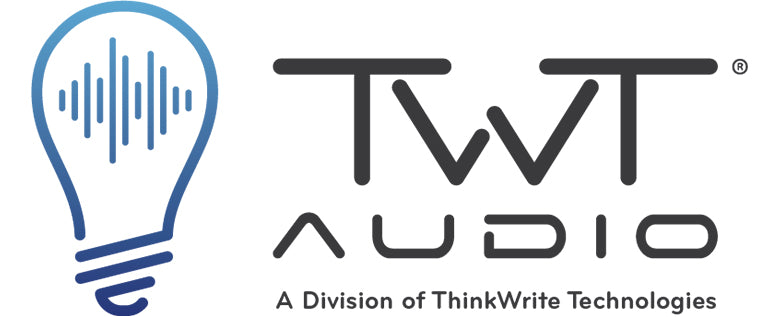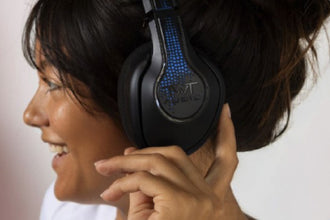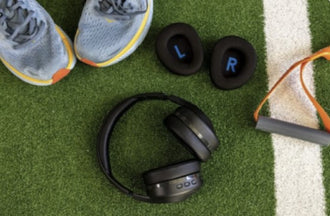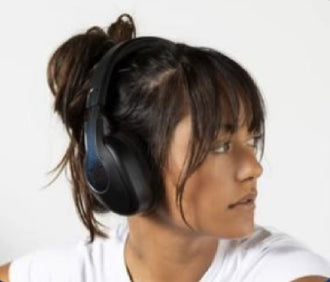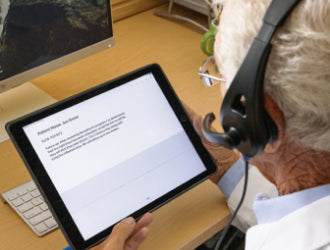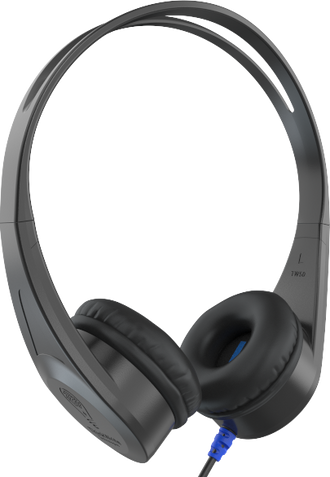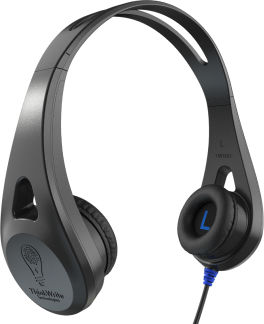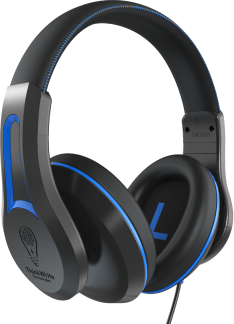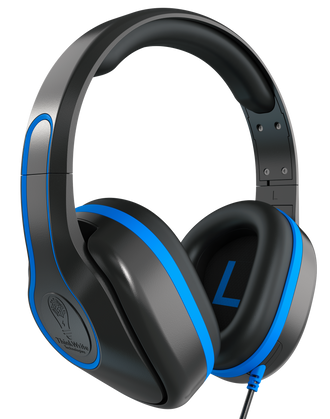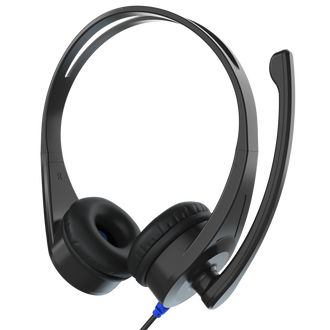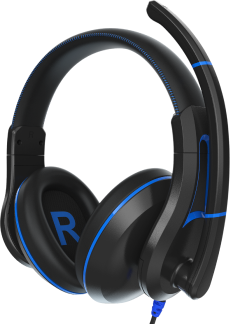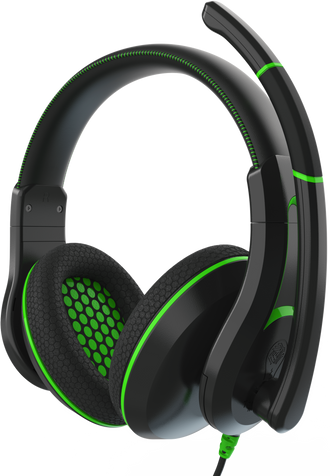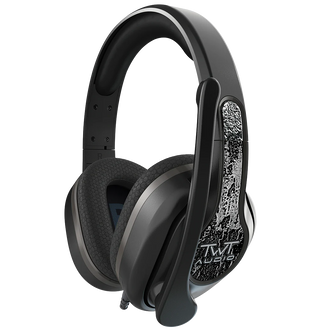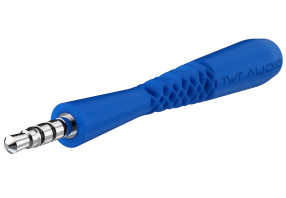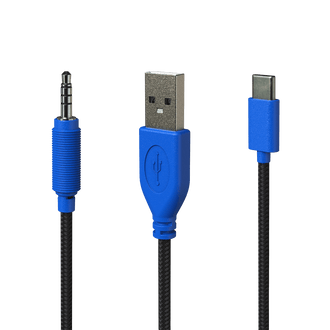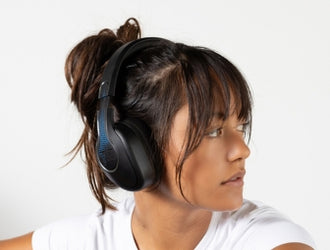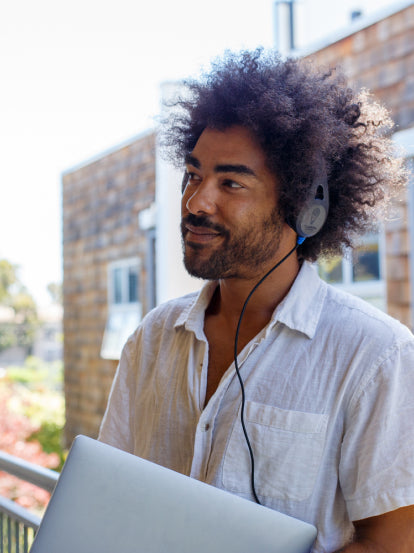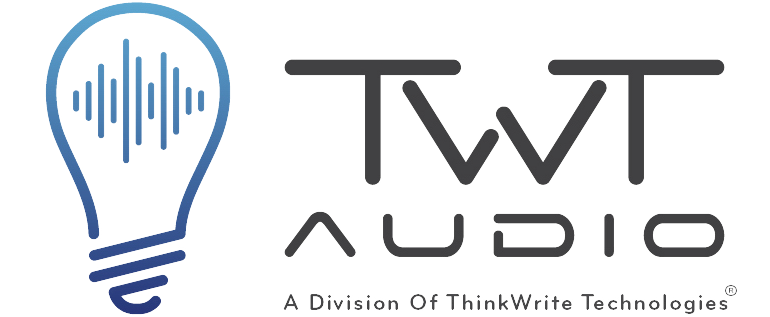The educational landscape is always changing, and with near-continuous updates to technology it's not surprising that students in the STEM field have access to more options than ever before.
Computers and tablets are commonly used and expected, but a less-obvious but essential tool for the classroom is high-quality headphones. With their ability to provide clear, immersive audio and block out distractions, they help students engage more deeply, retain information more effectively, and collaborate more efficiently.
The Growing Importance of Audio Equipment in STEM Education
Students in STEM education rely on a lot of digital tools, from coding platforms and interactive simulations to virtual labs and video-based instruction. These are essential to learning, but using them with distractions all around can make getting the right information a challenge. In noisy labs and classrooms, or learning spaces with open plans, using personal audio devices like headphones means more focus and less struggle.
In short, what was once a convenience is now a necessity. Quality headphones ensure students hear instructional videos, software tutorials, and interactive lessons. The STEM field is a technical discipline where precision and detail matter, and muffled or distorted audio can compromise comprehension, slowing student progress. With clear sound through quality headphones, students learn more comfortably.

How Quality Headphones Enhance the STEM Learning Experience
Studies have consistently shown that audio quality directly influences a listener’s ability to focus and retain information. Background noise significantly impairs speech intelligibility and memory retention, which are two key components of effective learning. When students aren't hearing clearly, and they have to tune out background noise, they forget more of what they learned, and often become frustrated. Naturally, that's not conducive to a good learning environment.
Quality headphones equipped with passive noise cancelling features provide a buffer against all the environmental distractions that can be part of a busy learning environment. By physically blocking out ambient noise, they create a more controlled listening experience. This helps students stay focused on the content at hand, whether they’re troubleshooting a piece of code, participating in a virtual chemistry lab, or analyzing engineering blueprints explained via tutorial.
Additionally, good audio quality reduces cognitive load. In other words, it makes it easier for students to focus on the task at hand and information they're receiving, instead of using a lot of brain power to tune out additional noise. When students don’t have to strain to hear, they can devote more mental energy to understanding and synthesizing information, which is an especially important benefit in complex STEM fields.
The Science Behind Passive Noise-Reducing Technology
Unlike active noise cancelling (ANC) headphones, which use electronic circuitry to counteract ambient sound, passive noise-reducing relies on the physical design and materials of the headphones themselves. High-quality ear cups and tight seals help to block external noise without the need for batteries or processing. That makes the headphones light and comfortable, and can help them last longer, even with heavy, frequent use.
This makes passive noise-reducing headphones ideal for classroom settings, where simplicity and reliability are keys to a strong learning environment. They don’t require charging, don’t introduce electronic interference, and tend to be more durable due to fewer internal components— though models with long battery life can also be effective in certain educational settings. As a leader in educational audio solutions, we at TWT Audio incorporate passive noise-reducing technology into our headphone designs. The goal is to provide students with focused, immersive listening experiences without any unnecessary complexity or maintenance issues.

Key Features to Look for in STEM Lab Headphones
When you're choosing headphones for a STEM lab or classroom, there are several important features you'll want to consider, including:
-
Durability: STEM environments can be demanding, and students may use headphones daily, transport them between stations, or store them in shared bins. Headphones need to be rugged enough for regular use without breaking or degrading.
-
Comfort: Long lab sessions or extended programming tasks mean you need headphones that are lightweight, padded, and ergonomically designed. Comfortable headphones help reduce wearer fatigue and make it easier for students to stay engaged.
-
Audio Clarity: Precision matters in STEM, and whether students are following a coding tutorial or listening to step-by-step lab instructions, they need crystal-clear audio to handle complex content more easily.
-
Fit and Adjustability: A secure, adjustable fit means students' headphones stay in place and block out external noise the way they're supposed to. A poor fit can lead to distraction and discomfort, and that means less efficient learning.
If students are complaining about the headphones they currently have, or your classroom's headphones are wearing out quickly and not holding up to frequent use, it may be time to upgrade to better options to help students continue to learn.
Using Headphones to Enhance Different Types of STEM Learning
Quality headphones can benefit a wide range of STEM subjects and activities, such as:
-
Computer Science & Coding: Instructional videos, debugging walkthroughs, and software tutorials can require significant effort. It's easier to learn about these complex subjects in quiet, focused environments. Headphones also allow students to pause, rewind, and listen closely without disturbing others around them.
-
Virtual Labs & Simulations: Sciences like biology and chemistry are increasingly taught using immersive virtual simulations. When students have clear audio guidance it can enhance their experience and help them follow protocols, so they can understand the outcomes more easily.
-
Engineering & Math Tutorials: Headphones help students follow complex formulas, design explanations, and problem-solving strategies in video or audio formats. They’re also really useful in collaborative settings where focus and clarity are vital to the learning experience.
Overall, STEM learning environments generally benefit from quiet and the ability to focus, but with a classroom full of students that's not always easy to get. Headphones mean students can tune out distractions and immerse themselves in the work they're doing, without being pulled away by noise around them.

Creating Collaborative Yet Focused STEM Environments
The best learning environments balance individual student learning and collaborative experiences. Headphones with built-in microphones, like those offered by TWT Audio, make it easy for students to work in pairs or small groups using video conferencing platforms or virtual collaboration tools.
Passive noise-reducing headphones help students work independently in shared spaces without distractions. It's important to recognize when headphone use might hinder group dynamics, and it's essential to set clear guidelines for when headphones should be used, as well as encouraging flexible use depending on the activity.
TWT Audio's Passive Noise-Reducing Headphones for STEM Labs
At TWT Audio, we've developed several education-focused headphones designed specifically for school environments. The two models most commonly used are DURO and REVO headphones, for the quality and value they provide.
DURO headphones are built for durability, with a strong, solid design, noise-reducing ear cups, and a tangle-free cable. They’re a great choice for daily use in labs and classrooms where they need to hold up and last a long time.
Another good option is the REVO TW300 headphones, which is excellent at audio clarity, sound quality, and comfort. These headphones also include a detachable microphone, making them easy to use for hybrid or virtual STEM instruction. They have a lightweight design to ensure extended comfort for long learning sessions.
We know the importance of quality, safety, and performance for classrooms, and our headphones are designed with young learners in mind. They're free from volume spikes, built to last, and easy to maintain, so you can use them throughout your classroom and keep students engaged in learning.
FAQ
How do quality headphones improve STEM learning outcomes?
High quality headphones encourage students to understand and remember complex concepts by delivering clearer sound without any distraction.
What are the advantages of passive noise cancelling versus active noise cancelling in education settings?
Passive noise blocking works without batteries or charging, making it more practical for everyday classroom use where simplicity matters.
What features should I look for when selecting headphones for a STEM lab?
Choose headphones that can withstand daily handling, feel comfortable during long sessions, provide clear sound, and store easily between classes.
How do headphones help students with different learning styles in STEM classes?
Headphones support different learners by reinforcing what they hear, helping them concentrate, and working well alongside videos and hands-on projects in an inclusive learning environment.
Are headphones appropriate for all STEM activities, or are there times when they shouldn't be used?
Headphones work great for individual learning and online labs, but should be set aside when students need to talk and work together on projects.

Equip Your STEM Lab With TWT Audio's Education-Focused Headphones Today!
Investing in the right headphones can dramatically improve STEM education outcomes in your classroom by enhancing focus, clarity, and collaboration. TWT Audio’s headphones are designed with the classroom in mind, and offer unmatched durability, passive noise reduction, and user comfort.
Ready to explore our full education lineup, so you can find the right solution for your students' needs? Whether you're looking for rugged construction, microphone integration, or ease of storage, there’s a TWT model that's perfect for your lab or classroom.
